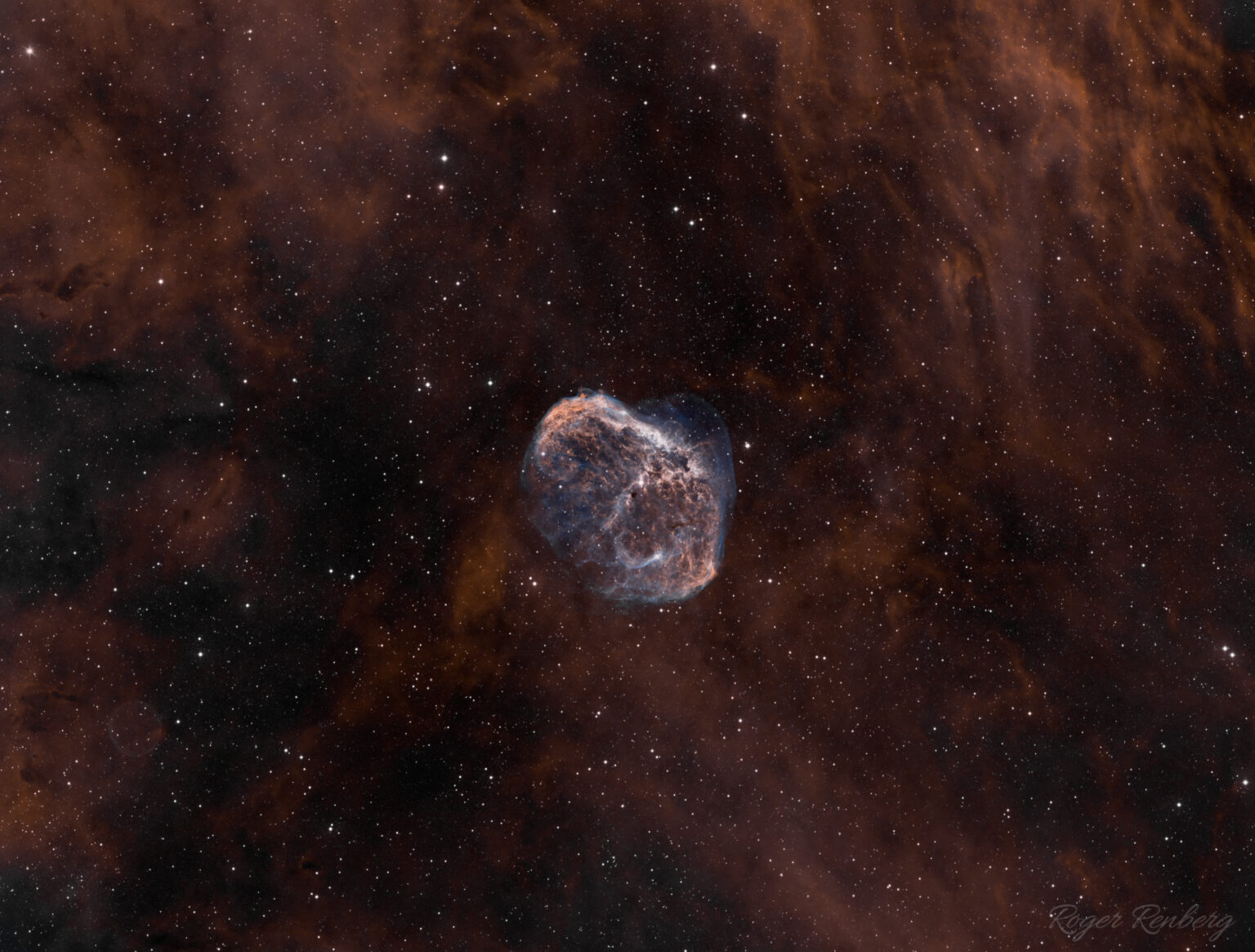
NGC 6888: A Cosmic Ballet of Beauty and Violence
In the Cygnus constellation, some 5,000 light-years away, a celestial masterpiece known as NGC 6888, or the Crescent Nebula, graces the cosmic stage. This nebula, with its delicate crescent shape, is a stunning juxtaposition of beauty and cosmic violence, offering a glimpse into the mysteries of the universe.
At its heart lies a colossal and enigmatic star known as a Wolf-Rayet star, specifically WR 136. This stellar giant, approximately 250,000 times more luminous than our Sun, is in the final throes of its existence. What makes WR 136 so intriguing is that it has shed most of its outer layers, leaving behind a hot, compact core that emits intense stellar winds and powerful ultraviolet radiation. These fierce forces collide with the previously expelled outer layers of the star, creating a breathtaking shockwave that sculpts the nebula’s distinct crescent shape. It’s a cosmic dance of destruction and creation, where a star’s demise gives birth to stunning cosmic art.
But NGC 6888 is not just a static portrait; it’s a dynamic, ever-changing Chef-d’oeuvre. The powerful winds from WR 136 continue to shape and mould the nebula over time, creating a celestial ballet that unfolds over millennia. As you gaze upon this photograph of NGC 6888, you see a captured moment in this cosmic performance, freezing the intricate details and vibrant colours at that moment in time.
Beyond its aesthetic allure, NGC 6888 offers scientists a treasure trove of insights. When astronomers analyse its spectrum, they discover a rich tapestry of emission lines, revealing ionised elements such as hydrogen, oxygen, and sulfur. These elements provide clues about the composition and physical properties of the nebula, shedding light on the life cycles of massive stars and their influence on the cosmos. Even more fascinating is that NGC 6888 offers a glimpse into the future. WR 136, at its core, is nearing the end of its journey. It will eventually explode in a spectacular supernova, dispersing its enriched elements into space and contributing to the formation of new stars and planetary systems in our galaxy.
©Roger Renberg